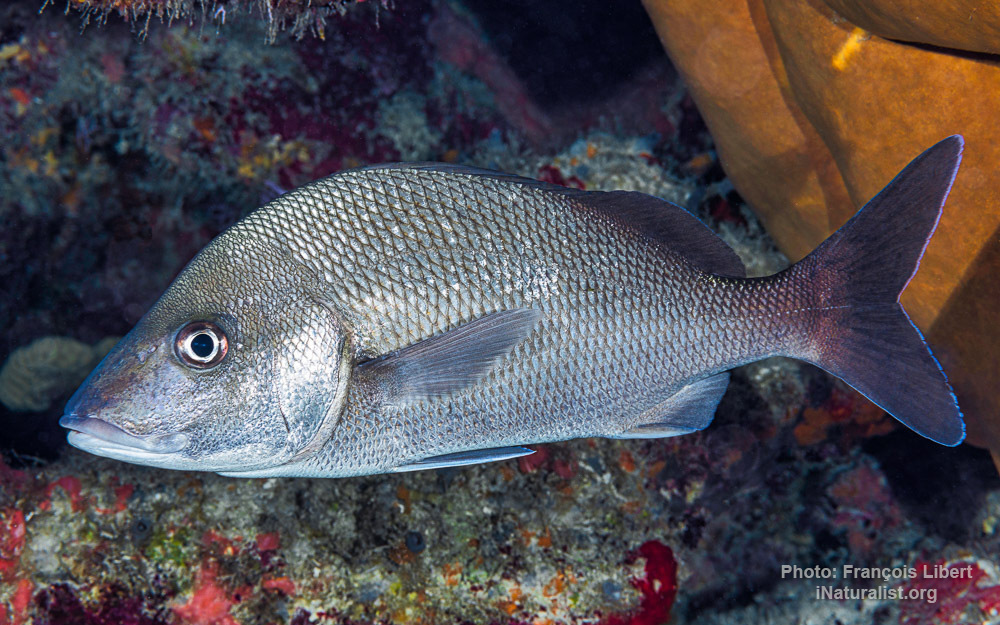White margate
(Haemulon album)

Classification
General data
H. album has a high-backed, deep, oblong, compressed body with a blunt snout and small eyes. The mouth is not very large and the lips are not fleshy. They have teeth on the pharynx and serrated gill covers. The rows of scales situated just underneath the lateral line are angled.
It has a continuous dorsal fin, with only a slight notch between the spiny and soft-rayed parts. The dorsal fin contains 12 spines and 15-17 soft rays, while the anal fin contains 3 spines and 7-8 soft rays.
This species attains a maximum total length of 70 cm (28 in), although 50 cm (20 in) is more typical.
The white margate varies in colour from greyish silver to light olive green, although this colour is usually restricted to the back. The scales on the upper part of the body have dark spots. The soft-rayed part of the dorsal fin and the caudal fin are dark grey, while the other fins are pale.
An indistinct dark blotch may occur on the gill covers. The lips and shout have a yellow hue and the inside of the mouth is orange. They have a white iris too.
The juveniles have a bluish colour marked with dark stripes ventrally. Subadults may also have some blackish colouration on their backs between the base of the dorsal fin and the tail.
H. album is found in the western Atlantic Ocean. The northern limit of its range is in Bermuda and eastern Florida, through the Bahamas, the Gulf of Mexico, and the Caribbean Sea. It is found along the coast of Central America from Quintana Roo to islands and cays off Nicaragua. This species has also been confirmed in the waters around the Brazilian oceanic islands of Fernando de Noronha and Atol das Rocas, although it is absent from the mainland Brazilian coast.











